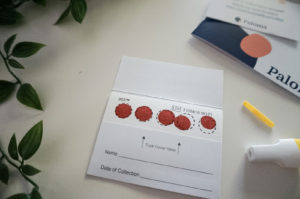Dried Blood Spot vs. Venipuncture: What blood draw method is more accurate?
One of the biggest challenges for clinical or diagnostic labs is gaining access to the skilled labor required to provide specimen collections. Without these specimens, labs cannot generate results to provide to patients. Over 70 percent of medical decisions are based on lab results, but access to these tests can be a challenge for patients.
The My One Medical Source® (MOMS) platform is a compliant, convenient, and quality process-driven solution for labs struggling to gain access to this labor pool. Our MAP: Medical Access Point™ network is comprised of brick-and-mortar facilities that have the skilled labor required to perform necessary specimen collections in place.
Specimen Collection Process/Methods
Different tests may require different specimens as part of the resulting process. Similar to the variety of tests, there is also a variety of collection processes for these specimens. The labs on the MOMS network primarily analyze blood, but other specimen examples include saliva and urine.
Given the intricacies of each specimen collection process, the labs on the platform are required to upload specific draw instructions so the skilled labor they connect with can perform a successful collection.
When a lab analyzes blood samples (serology), there are two main collection methods used: dried blood spot and venipuncture.
Dried Blood Spot vs. Venipuncture
While both methods focus on blood, they are very different. Dried blood spot samples can be collected in a non-clinical setting and do not require a trained professional to perform the collection, whereas venipuncture must be performed by a phlebotomist.
Dried blood spot collection is non-invasive and commonly requires the patient to puncture their fingertip via a lancet and drop blood on a carrier material. The sample is then sent to a laboratory where it is processed. This is a common collection method used for at-home tests, such as a food sensitivity test. These samples require fewer resources for collection, shipping, and analysis.

Example of collection card for dried blood spot tests. Photo via Paloma Health.
Venipuncture is the collection method performed by a trained medical professional who uses a needle to take blood from the patient’s vein. It is the method used in most traditional blood draws. The samples collected may be referred to as “wet blood” compared to those collected by dried blood spot tests. These collections require special storage and transportation procedures to keep the specimen samples stable.
Not only do these collection methods differ, but the blood specimens themselves do too.
Dried blood spot samples, which are primarily collected from the fingertip, consist of capillary blood. Venipuncture samples, which are collected by a phlebotomist from a patient’s vein, consist of venous blood, which is the specimen of choice for most routine lab tests.
The quality of capillary or venous blood test results is primarily determined by specimen collection, rather than the collection method. While dried blood spot collections (capillary) can primarily be collected at home by the patient themselves, venipuncture (venous) collections must be performed by a trained professional/phlebotomist. The skilled labor that comprises our MAP: Medical Access Point™ network has been trained in phlebotomy so the specimen collection has a better chance of being high-quality.
Dried Blood Spot Best Practices
If a patient is in need of a dried blood spot sample collection, Neoteryx has some best practices to avoid poor-quality specimens:
- Selection of appropriate puncture site and sampling/collection equipment, depending on the requested tests
- Warming the puncture site before collection for increased blood flow
- Proper puncture site disinfection
- The first drop of blood should be discarded
- Quick collection without milking or scraping of the puncture site
- Proper sample labeling, storage, handling, and transport
Do you have a lab order from a MOMS lab and need to have your specimen collected? Visit the MOMS Patient Portal to find a MAP location nearest you!
Schedule a platform demo today to see how MOMS can help your MAP or Lab facilitate growth in a compliant, convenient way.
**Medically reviewed by Dr. Sona Kirpekar, MD
Before you go…
